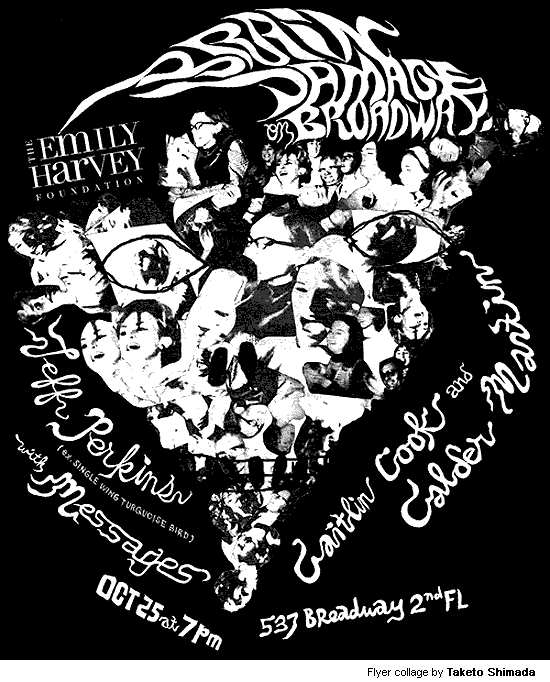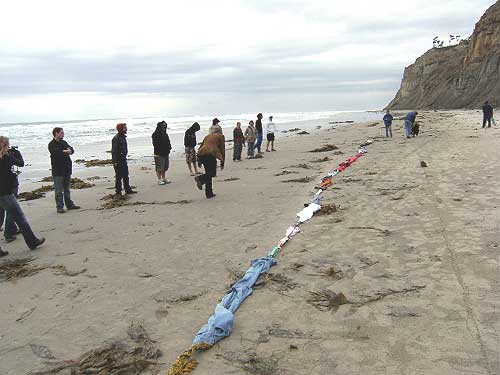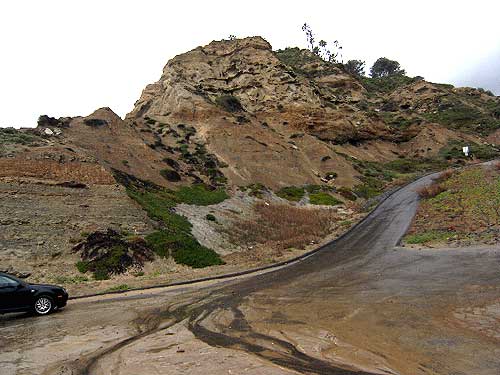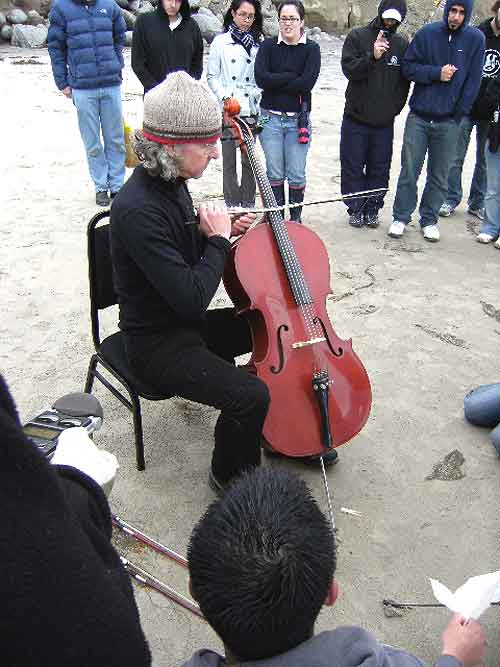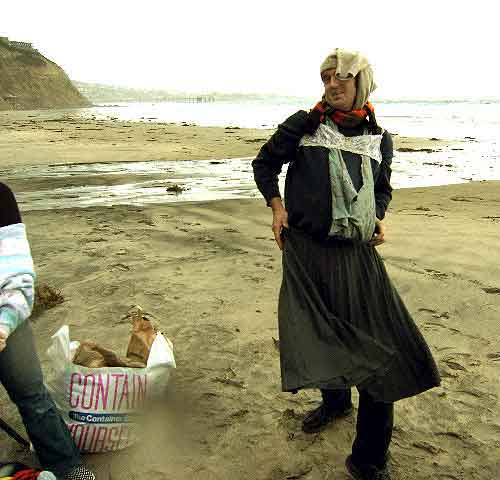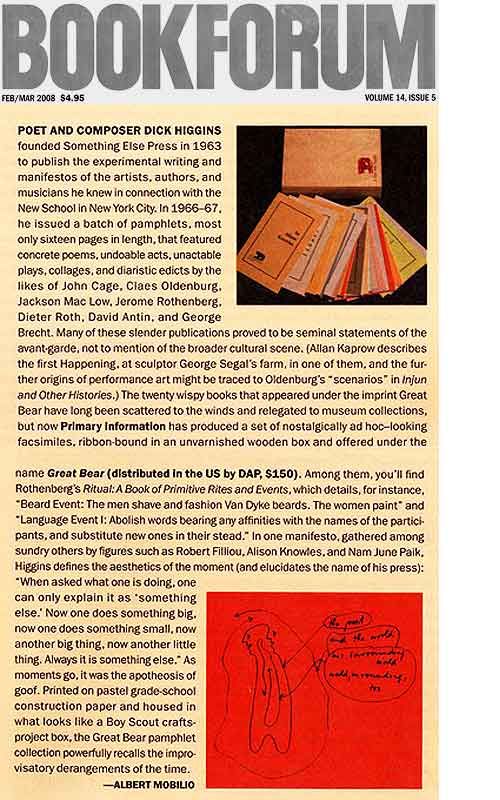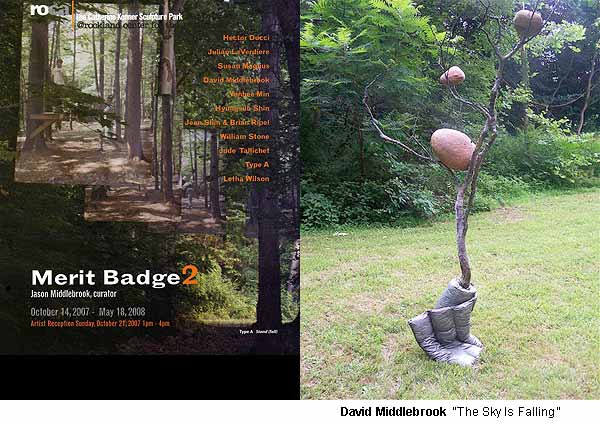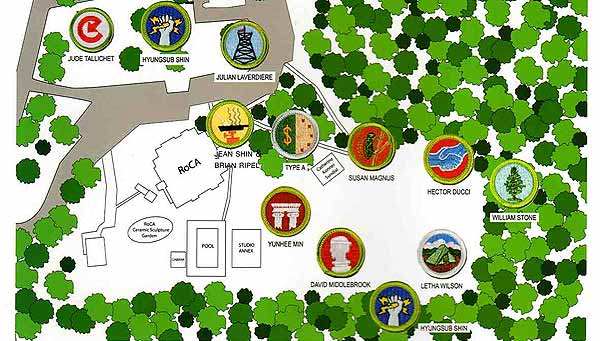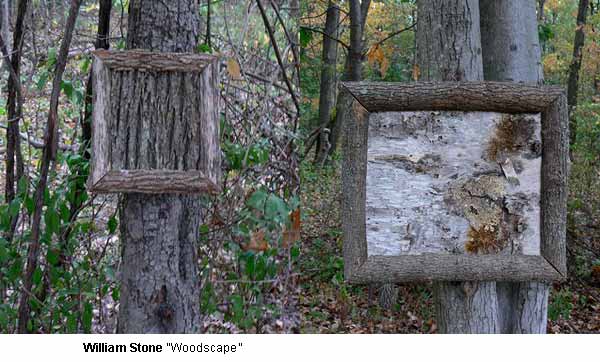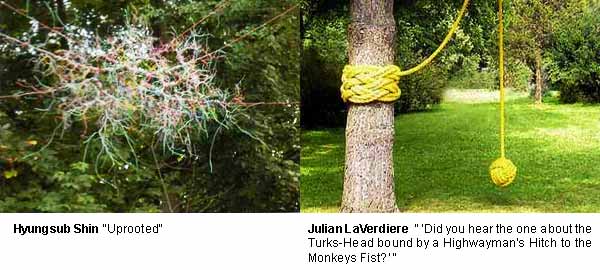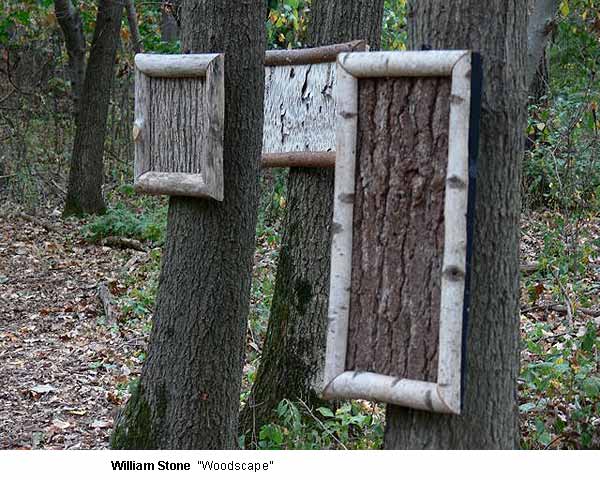Friday, March 7th, 2008
Embarrassment and Address
Mina Cheon’s Addressing Dolls at the C.Grimaldis Gallery
Baltimore, Maryland
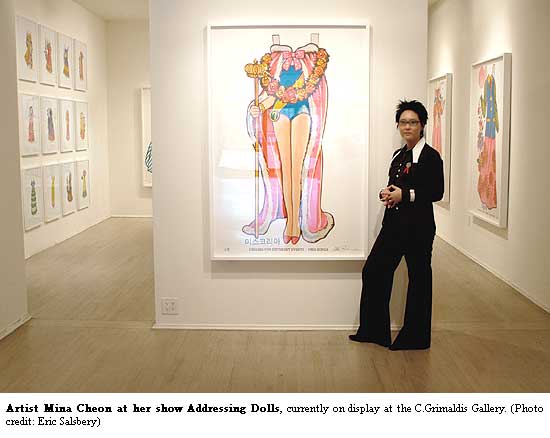
by Brian Willems
Dollhouses first became popular in 17th century Western Europe. One of the most famous patrons of dollhouses at the time was Petronella Oortman of Amsterdam. If you go to the Rijksmuseum in Amsterdam you can see some of her collection. Painted large upon the wall of the exhibition room, in English and Dutch, you learn that Oortman spent from 20,000 to 30,000 guilders at a time on the houses and their furniture, a price which could have purchased a real house on one of Amsterdam’s canals. This information is presented as shocking, and Oortman as wasteful. This is because dolls are not real, so they cannot appreciate or be comforted by their houses. Such devotion and extravagance lavished by the living on the non-living, however beautiful the outcome may be, is embarrassing. Embarrassing because care is given to that which is considered not to deserve it — the empty husks of dolls.
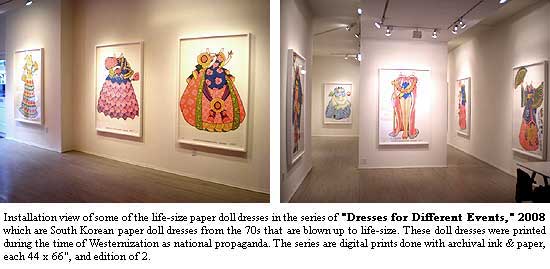
While embarrassment is usually thought of as a negative concept, in the artwork(s) of Mina Cheon’s exhibition Addressing Dolls it is a positive, strong and emancipating emotion. This is because embarrassment comes from being on unfamiliar ground. It comes from being subversively open to what is usually considered unimportant or impossible. Addressing Dolls foregrounds this unfamiliar ground by shining light on familiar tropes which have been manipulated within the thrust for Westernization in South Korean culture. In this sense the artwork functions in two ways: to focus our attention on the ways different kinds of dolls have been manipulated in Korean culture, and to highlight our own relationship to what is considered other than ourselves.
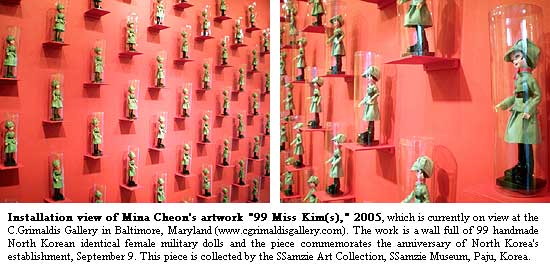
The focus of this exhibition is the trope of the doll. Its use is foregrounded firstly through repetition in 99 Miss Kim(s), which features 99 handmade female military dolls which were used to spread the propaganda of an oppressive North Korea, and secondly in the manipulation of scale in ten types of Dresses for Different Events, where frilly paper doll dresses are enlarged, becoming life-sized. These works call attention to the conflict present within Western and colonizing cultures in both Koreas and the way in which that has led to a conflicted relationship, and Cheon has worked on this cultural distortion by subverting the images and objects themselves. The repeated dolls of North Korean military femme bots and the blown-up Victorianized paper dresses of 70s South Korea do not let the viewer walk by, they do not let the viewer forget. Such a call-to-attention is embarrassing because it puts the viewer on unfamiliar ground by taking given and familiar tropes and putting them out there, exposed and open to scrutiny.
So where does that leave the viewer? Again, putting a positive spin on a term that is usually seen as negative, the viewer is left in a state of stupidity. In a sense, you can say that it is stupid to address dolls, to dress them, to cover them with wealth or ideas or to look towards dolls for answers, since they do not give anything back. However, it is in this state of a removal from what is usually considered intelligence that something new can come about. This removal can be considered a form of address because it is an openness to response, a turning towards and opening to. In this manner it is an address in the sense of location, of where you are dwelling. Such a thinking of the address of stupidity has been developed by philosopher Avital Ronell who argues that stupidity “tends to sever with the illusion of depth and the marked withdrawal, staying with the shallow imprint. Unreserved, stupidity exposes while intelligence hides.” This is what was meant above regarding embarrassment. What Addressing Dolls does is to expose through distortion. In this sense stupidity is that which is left when a positive answer is denied and instead what is held open is the moment of questioning, of the pencil poised above the answer sheet. As Ronell states, “Stupidity makes stronger claims for knowing and for the presencing of knowledge than rigorous intelligence would ever permit itself to make.” Cheon takes the manipulative and damaging tropes of the women as dolls in Korean culture and positivizes it by allowing an interaction with such tropes to become an action of embarrassing us out of ourselves, and allowing something else to become present, a knowledge more rigorous than intelligence would ever allow. Such a positivization is also a part of bringing the exhibition to the US from its showing in South Korea: by bringing Westernization back into the West, a sense of defamiliarization is lodged into the heart of the familiar.
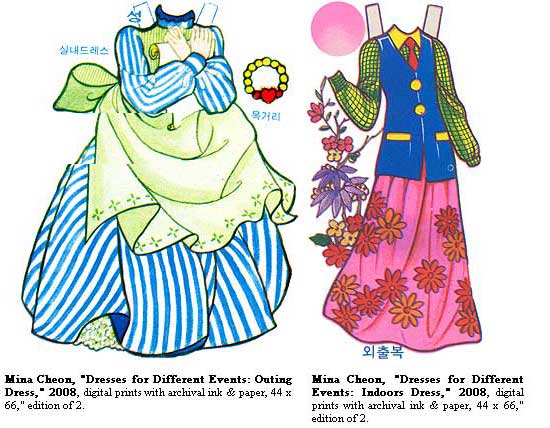
So we become embarrassed addressing something that cannot respond, doubly embarrassed because assumed tropes of how the desire of South Korean female beauty is mimicked by Western standards and shaped by Korean expectations and imitation are exposed and such an exposure enacts a removal from intelligence, from what we know or accept, and thus we are put on unknown or at least unstable ground. The result of this exposure is that there is room kept open for the possible, for new thought. However, in order for such openness to exist, the other that is addressed must be allowed to remain in a position of strength. What is meant here is that it is precisely the other that has the strength to do work that we are not able to do, meaning, to bring us into a presencing of ourselves. In order for this presencing to take place, a relationship of what can be called embarrassment, stupidity or perhaps groundlessness needs to happen. Such a relationship to the other is denied these recent Korean artifacts for girls. However, when these manipulations are exposed and reworked, which is at the heart of Cheon’s work, a space for openness ha
ppens.
So in a sense in the 17th century Oortman could be said to have had the correct attitude after all. To lavish the non-responsive other with extravagance and surplus is a way of keeping its strength alive, of honoring its unknown. As Cheon wrote in a recent piece on the hand, “The dolls are interesting non-beings and a gift of my childhood when my hands were not big enough, strong enough, firm enough to hold scissors.” Perhaps it is only a risky, embarrassing and open relationship with a strong other that might allow us to have the ability to approach ourselves.
Brian Willems is an American assistant professor of literature at the University of Split, Croatia. His essays have appeared in or are forthcoming in artUS, A Tribute to Jean Baudrillard, Battlestar Galactica and Philosophy, From A to : Keywords in HTML and Writing and others. His poems and prose have appeared in Antioch Review, Poetry Salzburg Review, Hotel St George Press and others. He has a book forthcoming on Martin Heidegger and Gerard Manley Hopkins.
This text Embarrassment and Address is written for Addressing Dolls, Mina Cheon’s solo exhibition at the C.Grimaldis Gallery, Baltimore, Maryland, which is on display until March 29, 2008.
#permalink posted by Brian Willems: 3/07/08 11:58:00 AMMonday, March 3rd, 2008
In Conversation With Jeffrey Perkins
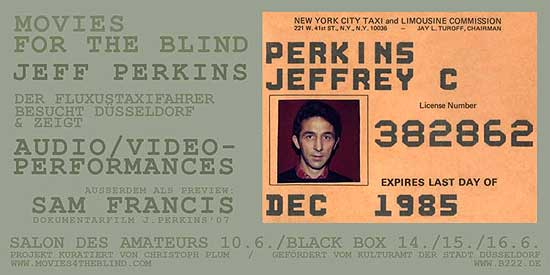
an interview by Chiara Vecchiarelli
Jeffrey Perkins is a visual artist and filmmaker who recently resurfaced at The Emily Harvey Foundation in Brain Damage on Broadway, an evening of hypnosis, experimentation and psychedelia organized by artist Taketo Shimada of Messages. Years ago Jeff co-founded Single Wing Turquoise Bird, who provided light shows to Velvet Underground, Grateful Dead and Dr. John to name a few and on October 25’ 07, through Shimada’s initiative, resurrected his first light show in thirty years to the sounds of Shimada’s own collaborative project Messages. But there is far more to know about Perkins, a decades long associate of Yoko Ono, John Lennon, George Maciunas and Nam June Paik among many others. While serving in the U.S. Air Force stationed in Tokyo in the early 1960’s, he met Yoko Ono and her husband Anthony Cox. Through them he was exposed to the works of Cage, Duchamp, LaMonte Young and others and began participating in events, performances and concerts. Jeff currently exhibits at the Emily Harvey Gallery and is now finishing up his new film ‘The Painter Sam Francis’.
IN CONVERSATION WITH JEFFREY PERKINS
ART AND USE, WITHOUT INSTRUCTIONS
The following interview took place on a day in December 2007 in Jeffrey Perkins’ loft, in New York. We had just seen his last documentary film The Painter Sam Francis. The catalogue of the Venice Biennial historic exhibition Ubi Fluxus Ibi Motus, of which he took part, was among his books, together with a program of the experimental Cinematheque Theater 16 that he directed in Hollywood, and his personal copy of the Fluxfax Portfolio. On the floor, two suitcases fostering hours of interviews with passengers Perkins used to record in his cab, following Nam June Paik’s advice.
Jeffrey Perkins is the author of original performances, the discreet story teller of Sam Francis’ work, the friendly camera operator of Yoko Ono’s Film #4. Above all he is the witness of the fact that art is the place where the singularity of one’s own practice coexists with the sharing of ideas. Concepts that animate his practice are the source of his artistic and personal charm and one of the most interesting issues I really would like to deal with, in thinking and organizing art.
…
Chiara Vecchiarelli (CV): I like the idea that the material was nothing but the medium for your practice ….
Jeffrey Perkins (JP): … Fourier felt that the direct channel from the producer to the consumer was the most ideal thing, because when the broker gets involved the broker doubles the price … A talisman! Exactly, a talisman! This Fluxus publication bears the title: “How communists must give revolutionary leadership in culture.” I chose my rent. I rented out for very cheap, no profit …
CV: What is interesting is that Fluxus proposed an economic alternative system and that you are still proposing it in your everyday practice, in your small economic world…
JP: … I’m also thinking of the artist George Brecht’s ideas … Flynt used to say to me … “this place is more important than any art museum in New York City.”
CV: Joseph Beuys associated himself with Fluxus in the beginning … Can we speak of a social sculpture in your work, or rather of a social sculpture that presents itself in the collateral effects of your work …
JP: I read an interview with Beuys … he probably became aware of the Fluxus avant guard art, where art could really expand, which happened to me when I met Yoko Ono in Tokyo and I read John Cage’s book on silence. We saw the work in Anthology, and suddenly I was exposed to a new universe, a new doorway to what I thought art was … When I first saw Beuys’ work, his pictures and magazines, I immediately understood what he was doing … Why is there a room in the Pompidou with a piano wrapped in felt … I guess this is what the French situationist, Guy Debord, wrote about. I think I’m a situational artist …
Taketo Shimada is an artist organizer, visual artist and musician from Tokyo. He has lived and worked in NYC since the mid 80s. He has worked with a variety of figures such as Henry Flynt, Alison Knowles and Rammellzee to name a few.
Tres Warren is an artist and musician living and working in New York City. He’s involved in various music collaborations including Messages and has performed as part of Damo Suzuki’s Network, in addition to recording and touring internationally with his band Psychic Ills.
Messages – a duo comprising Tres Warren of Psychic Ills and visual artist Taketo Shimada.
[youtube=http://www.youtube.com/watch?v=1wX4sLROkLY]
Messages at Roulette
The Emily Harvey Foundation is a private foundation registered in the State of New York.
#permalink posted by Chiara Vecchiarelli: 3/03/08 02:58:00 PMTuesday, February 26th, 2008
Shoreline at Black’s Beach with Charles Curtis
by Alison Knowles
Shoreline is an event score given to outdoor airings. The piece has been done in Miami at the Subtropics Festival, and last year in Newcastle, England at the Waygood Gallery. This past week we did it again by the Pacific Ocean in San Diego.
As we approached the cliffs the wind and rain were fierce. We waited in cars and truck until the rain stopped. It was gray and very cold. Suddenly Charles Curtis glanced at the sky and said. “Let’s do it now.” It was noon in mid February 2008.
The event score reads like this:
shoreline
connect apparel, toys and shoes, scarves and hats altogether in a line and place along the shore of any sea
We traveled the sewing machines, staple guns, needles and thread, set up the table and started to work. Separating the clothing into conceptual groups like “silk and something blue” or “why did you leave me.” Students in the music Dept of Charles Curtis at UCSD had composed these idea cards to sort out the piles of clothing. Rocks were used to keep the connected line of apparel on the sand against the rising wind.
In the adventure of the afternoon Charles performed a notation I had made for him titled Rice and Beans on an old cello weathered for the beach. The score was held up by six people thus preventing the wind from tearing it apart. He interpreted the score using three different bows. Wind and Sea accompanied the weathered cello, inspiring awe.
This work will be performed in New York at the Miguel Abreu Gallery at 36 Orchard Street, NYC, indoors in a warm room, on the 25th of March at 8:00pm. There will be a piece by John Cage as well.
I am deeply grateful to Charles Curtis for providing us all such a wild experience in new music on Black’s Beach.
#permalink posted by Alison Knowles: 2/26/08 01:51:00 PMSaturday, February 2nd, 2008
Dick Higgins and Something Else Press
Great Bear Pamphlets
Make Bookforum February 2008
artist Erika Knerr
Something Else Press was the ultimate artist organized independent press. The result was seminal intermedia and chance theory and their instances. Finally after many years out of print, now get your own copies of the Great Bear Pamphlets at Printed Matter.
#permalink posted by Erika Knerr: 2/02/08 07:00:00 PMMonday, December 31st, 2007
The Fine Art Adoption Network by Adam Simonwww.fineartadoption.net
The Fine Art Adoption Network was commissioned by Art in General, NYC, as part of their New Commissions program. The web master is John Weir. We launched FAAN in April 2006.
The goal of FAAN is to help increase and diversify the population of art owners and to offer artists a new way to reach their audience. Artists post images of works they are willing to offer for adoption and potential adopters email them through the site. The artists choose an adopter from among those that solicit them. The artist receives no money for the artwork and the only costs to the adopter are whatever is required to transfer the work. Once the transaction has been completed, the artwork becomes the property of the adopter.
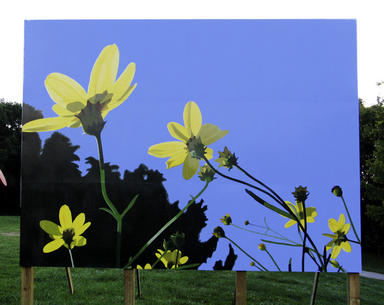
Carrie Waldman, More Moonbeams, 2005. 192 x 144 inches
Since the launch of FAAN in April 2006, over two hundred artists have joined and bestowed their art, almost 1,000 people are participating as adopters, and 237 adoptions of contemporary artworks have taken place. In its first six months, FAAN recorded more than 80,000 visitors, and the audience increases monthly. Media coverage has included Art News, Italian Vogue, the Christian Science Monitor, the New York Sun and strong coverage on the internet.
What I would really like to see is FAAN expanding until it is functioning throughout the U.S. as well as internationally. If this were to happen, it would mean that we would truly have in place an alternative system for the distribution of art. Not one that is intended to replace the art market but one that serves as a necessary corrective, allowing artworks into homes without the prerequisite of purchase.
There is an interesting dialogue that naturally occurs around the subject of art adoption. It includes the art market, the relationship between art ownership and class, the degree to which artists are subject to market concerns and ideas about the concept of gift economy and its relation to art.
The art market is one of the few markets where supply is not dictated by demand. Artists continue to make art whether or not they are able to sell it. Meanwhile the market depends on an artificially created notion of scarcity of good art. The notion of rarity that the market requires depends on a small number of artists being selected from a large pool. Partly because of this, the art market can only accommodate a fraction of the art objects that are being produced. The market does a terrible job of putting art into a lot of homes.

Matt Freedman, Lost Puppy, 2006. 2 x 4 x 3 inches
Over 200 adoptions have taken place through FAAN in the past year. Artworks are finding homes in unlikely locations. A fifth grade class in New Brunswick, Canada adopted Matt Freedman’s, Lost Puppy, an ironic site-specific work made for FAAN, as well as Perry Bard’s Zone, a sculptural proposal for peace in Korea. A policeman in training adopted Cathy Quinlan’s drawing of a head of the Madonna, after Duccio. Carrie Waldman’s billboard-format painting, an enormous, slightly pop view of daises in a field, has been installed on the outside of a building facing the town diner (where farmers have their morning coffee) of a small town in upstate New York. No one has adopted Sheryl Oring’s Writer’s Block, a series of metal cages each filled with approximately 30 antique typewriters, but I believe she is waiting for an institutional adopter.
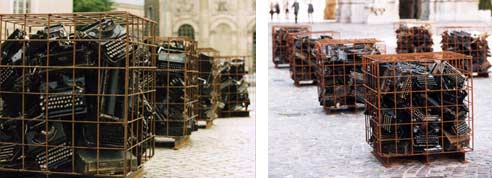
Sheryl Oring, Writer’s Block, 1999. 36 x 36 x 36 inches
The fact that both the artists and the adopters choose is one of the interesting features of art adoption. Ultimately though, it is the artist that chooses. Regardless of who gets to choose, a series of interactions is being initiated around the artworks. These interactions are multi-faceted and personal. For the adopters, it can resemble Internet dating. They present both who they are and the nature of their appreciation for the artwork. They are convincing artists by telling them what the artworks mean to them. For the artists, this can seem an unusual relationship to an audience. Typically in the art world, they are the ones soliciting recognition.
Art-lending institutions exist both in Europe and the United States and bartering art for services is not uncommon, but art adoption, as far as we know, is new. Both the artist and the adopter are aware of participating in something outside of the commercial norm. There is a shared sense of shaping a transaction differently, in part because they are in direct communication with each other. The art on the FAAN website is marked by its separation from expected venues. It is displayed, not as work soliciting buyers and not as part of an exhibition but as an object in a gift economy.
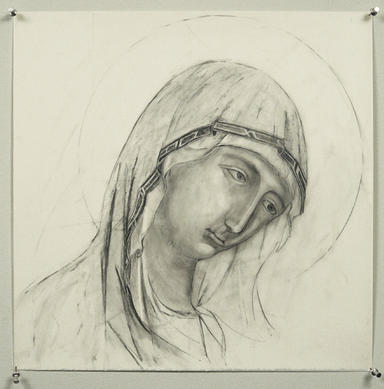
Cathy Nan Quinlan, Study for a Contemporary Portrait: Duccio,
2001. 17 x 17 inches
Once a system is established as the norm it becomes difficult to look at or to look for alternatives. The art market replaced a system of patronage by the aristocracy. I don‘t think anyone wants to see art adoption replace the art market. If FAAN continues to grow at the current rate, it could have the opposite effect of strengthening the art market by expanding the population of art collectors. Collectors who adopted work through FAAN have gone back to the artist and bought additional work.
It is too soon to know how many artworks adopted through FAAN are reaching homes that would be unlikely otherwise to house original artworks. Potentially, we are talking about a different relationship between art ownership and class. It seems clear that the demographics of people adopting art through FAAN are wider and more varied than those acquiring art through the gallery system.
The art world is small but the world reached by the Internet is huge. Ideally FAAN will continue to expand geographically so that someone browsing the site in Boise, Idaho or Brennero, Italy will be able to find artworks both locally and internationally. The one thing the adopters will have in common will be an appreciation for what artists do.
*artists wishing to post work on FAAN should contact info@fineartadoption.net
#permalink posted by Adam Simon: 12/31/07 09:22:00 PMTuesday, December 18th, 2007
Jason Middlebrook at RoCAMerit Badge2
Rockland Center for the Arts (RoCA)
October 14, 2007 – May 18, 2008
correspondent, Williamsburg Artist Carrie Waldman
“My father was an Eagle Scout in Michigan. He once told me that the only Merit Badge he didn’t get was due to the fact that he didn’t live near an ocean. As I grew older I knew I had two possible paths to take, follow his lead and try to become an Eagle Scout, or ignore the Boy Scouts all together. …I never became a Boy Scout, but I did follow in my father’s footsteps by becoming an artist.” -Jason Middlebrook
The Artists Reception Sunday, October 21, 2007 1pm – 4pm
The children, the bikes loaded into 3 cars, the trip up the palisades…is there a merit badge for family loyalty? Nepotism?
We routed our family Sunday activities to include an expedition to the Merit Badge 2 show at the Rockland County Center for the Arts. The 2 young boys in our troop immediately made like scouts and took off for the woods. The trail beckoned at the far end of a sculpture strewn field. And at the entrance to the woods hung a series of framed images on the trees. Images of trees, framed with bark branches. No, they were bark, pieces of bark from trees like those in the woods, framed with bark branches. Pieces of landscape framed by other pieces of landscape. “Woodscape” by William Stone. And off into the woods we followed.
The Merit Badge Show was organized by Jason Middlebrook, a prolific and energetic artist living in the Hudson Valley town of Craryville, NY. He curated the first Merit Badge Show on his own land in Craryville. The idea of earning merit badges strongly resembles the approach of many current artists. “Scouts must follow strict required tasks to learn about subjects that they normally wouldn’t investigate”, says the catalogue (and then make a show about it, if you’re an artist). That said, this is not necessarily the approach of the artists included, who used the theme to their own ends. Jason included his father, David Middlebrook, in the show. David constructed a poetic emblem of environmental abuse in which the sky is falling, gaining him the Sculpture Badge.
According to LYNN STEIN / ROCA Exhibition Director, David Middlebrook is a California-based sculptor who specializes in site-specific work, private and public commissions, and smaller sculptural elements. He works with a broad range of stone, marble, ceramic and bronze mediums in dimensions ranging from 50 lbs. to 50 tons. Middlebrook creates art that connects people with their cultures. He has more than 35 commissioned pieces to his credit. She includes that David Middlebrook’s work, The Sky Is Falling, explores the quagmire of environmental abuses and unexplained natural phenomena portrayed here as a poetic mystery of a childhood innocence, first observed by “Chicken Little.”
My brother, William Stone (participating artist,) followed his own surrealist/poetic approach to earn the Forestry Badge, with his piece, “Woodscape” (described above.) Interesting. Here’s his quote:
“The landscape is the landscape. What an incredible concept Merit Badges are. They seem more Grecian than military. To earn all of them, the goal, would constitute a start on a truly liberal arts education. Perhaps they were originally intended to guide a boy to a hobby. I only earned one. I picked the one that already was my hobby, a no-brainier.”
Hyungsub Shin’s artificial synthesis hung from the trees like a floating upturned root system. Julian LaVerdeire’s yellow rope swing most intrigued the boys, who were not permitted to follow their inclinations and swing on it. Other pieces were missed entirely in the conflict between following the map and following the boys- I guess we don’t get our Pathfinding Badges for the day.
The works on display will be left to weather the winter outdoors. One imagines some of the pieces looking quite beautiful in the snow.
Now, there I am, an artist writing on my own brother’s work, wondering why he gets more attention and noticing that my own work is orphaned in the Fine Art Adoption Network. (FAAN, a great concept for organization, see my own work in it above.) In the interest of rivalry I probably should say something more competitive, critical and monotone.
William Stone has shown his work both nationally and internationally, and has been included in recent solo exhibitions at sites such as the James Fuentes Gallery, NY; and the Art Moving Gallery, NYC. Stone’s recent group exhibitions were shown at Deste Foundation Galleries, Athens, Greece; the Archivo Emily Harvey Foundation
Galleries, Venice, Italy; and the Deborah Colton Gallery, Houston, Texas.
#permalink posted by Carrie Waldman: 12/18/07 09:21:00 PMWednesday, December 5th, 2007
Devon Dikeou’s “The Niney Chronicals”
Correspondent: artist Erika Knerr
December 1st – Feb. 10th 2008
at artMovingProjects
166 North 12th Street Brooklyn NY 11211 (between bedford and Berry Sts., Williamsburg)
Devon Dikeou gives us a long awaited dose of the sharp wit and literary humor that only Devon herself can zing out. While I searched the space for familiar faces the opening was packed with Devon’s fans from far and near.
Click on aMP’s blog site for more info http://artmovingprojects.blogspot.com/
 Devon points to Niney’s bottled bath water while engaged with a
Devon points to Niney’s bottled bath water while engaged with a
top Chelsea gallerist.
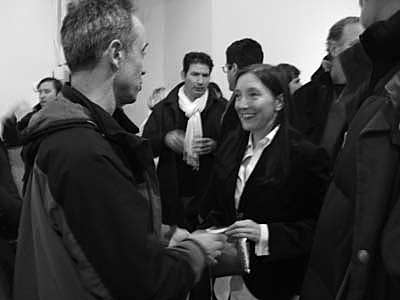 Artist and FAAN founder Adam Simon greets Devon with a card.
Artist and FAAN founder Adam Simon greets Devon with a card.
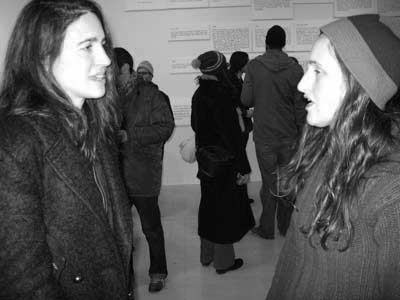 Artist Eva Mantel chats with aMP co-director Nancy Horowitz
Artist Eva Mantel chats with aMP co-director Nancy Horowitz
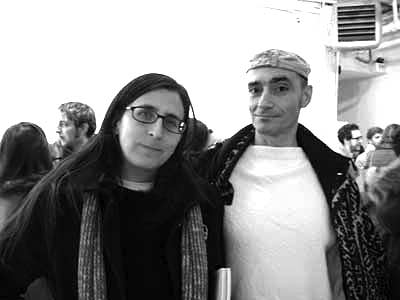 Artist & writer Shelley Marlow with AOA correspondent, artist Sante Scardillo
Artist & writer Shelley Marlow with AOA correspondent, artist Sante Scardillo
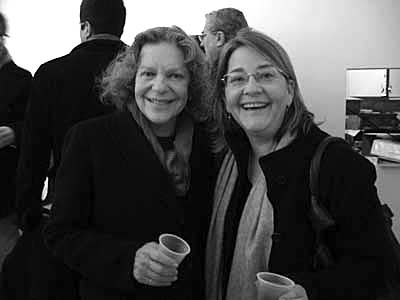 Artist Mary Obering with inside scoop on identity of “you know who” with
Artist Mary Obering with inside scoop on identity of “you know who” with
artworld transfugee Amanda Obering
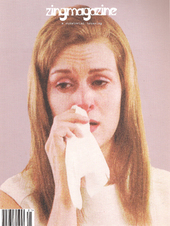 NEWSZINGMAGAZINE ISSUE #21 2006-2007
NEWSZINGMAGAZINE ISSUE #21 2006-2007
HAS BEEN PUBLISHED.Copies were available at the opening. Artist Organized Art likes Zingmagazine because it only comes out when it wants to. It has no need to bow to any periodic release schedule. This issue is thoughtful, edgy as always, and elegant. No borders, no boundaries, no reviews. 28 curatorial projects flow seamlessly from one to the next, layed out with over 300 pages of quality print. This is the biggest and best issue I’ve seen Devon put out yet. In it she says “Rather than remaining isolated and apart, either through an unaware and uninformed (or aware and informed) malaise, there is a need to commingle arenas.” This “curatorial crossing” and collaborative, book-like magazine comes out sporadically, and now is the moment.
#permalink posted by Erika Knerr: 12/05/07 03:23:00 PM





